Rodents Management
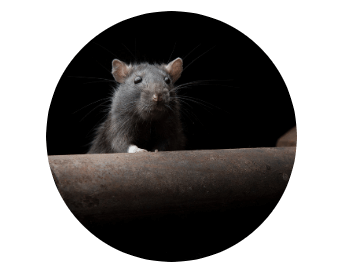
Rodents Treatment
Our professionals are trained not only to address rodent infestations but also to prevent future infestations. Scheduling a home inspection may help you get rid of rodents.
Problems with DIY – Homeowners may seek homemade solutions to their rodent problems. They may try a variety of repellents such as mothballs or even essential oils. These homemade methods are not capable of addressing full-blown rodents infestation.
It is recommended that anyone experiencing a rodent infestation contact a pest control professional to arrange for a consultation.
ARE RODENTS CAUSE FOR CONCERN?
Rodents & Disease – In addition to being tough to control, rodents may carry diseases and taint food with waste, fur, and saliva. In fact, mice can contaminate about 10 times the amount of food they eat. The CDC links some rodents to hantavirus pulmonary syndrome, a disease fatal in about 36 percent of all reported U.S. cases.
The pests are also hosts for fleas, which can spread plague and diseases like lymphocytic choriomeningitis virus. This illness mostly affects those with weakened immune systems and may result in headaches, fever, and meningitis. It can also cause complications during pregnancy.
It is not advisable to handle any wild rodents. They are equipped with large teeth and are capable of transmitting a variety of bacteria, viruses, and diseases through their saliva, feces, and urine.
If you locate a rodent within your home, it is best to contact a pest management professional for removal and identification. The presence of one rodent within a home could signal an infestation.
Keep all children and pets away from the rodent. If cornered, the rodent will bite to defend itself.
About Rodents
Types of Rodent
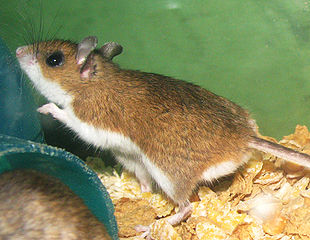
Deer Mouse
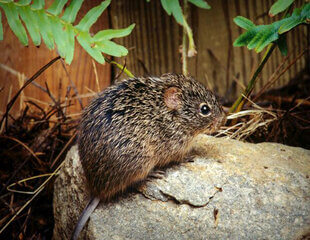
Cotton Rat
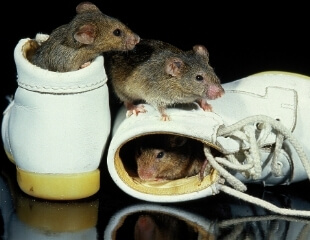
House Mice
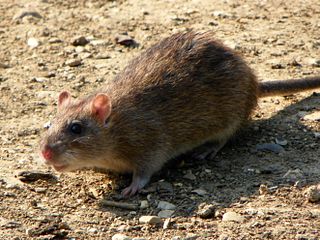
Brown Rat
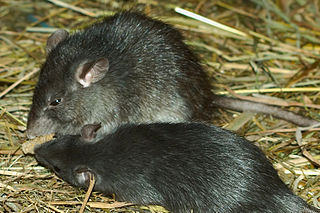
Black Rat
A.I.M
Step 1 : Assess
Inspection:
If you have seen rodents running around and want to help protect your home against this multiplying intruder, our specialist will come and inspect your home.
Rodents are sneaky and fast, but our specialist is trained to pinpoint evidence if they are around. On the first visit, we will examine your entire home including the bed, furniture, rugs, and linens. We will conduct an inspection of target areas, and if required, use tools to check cracks and crevices.
Our specialists will usually start in the kitchen and work their way through your home, concentrating on the furniture and the areas immediately surrounding the furniture.
Step 2 : Implement
Upon completion of the inspection and an assessment of the situation, our specialist will recommend the best course of action. If the inspection confirms an infestation, We will recommend a treatment plan based on the severity of the infestation and your preferences. We will use the best tools and science to address the causes and treat your Rodents problem in the best way for your family, pets, and the environment. This implementation method target rodents — preventing them from maturing into breeding, biting, and potentially disease-carrying adults.
Step 3 : Monitor
Rodents can be difficult to eradicate, so our specialist will perform a follow-up visit to help ensure the effectiveness of the professional treatment that was performed. Additionally, our specialist will document the visit and recommend the next steps to ensure the best maintenance approach for your home.
Other Services
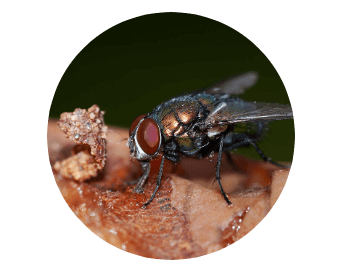
Fly Management
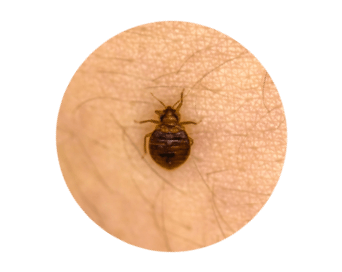
Bed Bugs Management
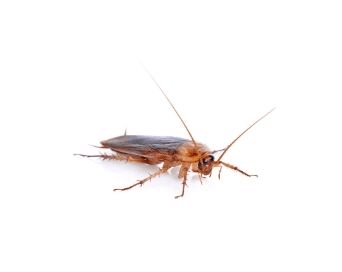
Cockroach Management

Cockroach Management

Bed Bugs Management
Let's Work Together!
Get rid of those Pests!

House Mice
Facts, Identification & Control
Latin Name: Mus musculus
Appearance
- Color: House mice are covered in short hair that is light brown or gray to black in color, with lighter bellies.
- Body: Their ears and tail also bear hair, although much less than their bodies.
- Size: Adult mice weigh approximately 12 to 30 grams and can grow up to 20 cm from the nose to the tip of the tail.
- Feces: Droppings are rod-shaped and pointed on both ends.
How Did I Get House Mice?
House mice can use even dime-sized cracks to gain entry into homes. They seek shelter indoors to escape inclement weather or predators like snakes and coyotes and to locate food sources. Cluttered attics and basements provide excellent hiding places for the pests to build nests and reproduce, while dirty dishes and unsealed pantry goods offer food sources. Wall voids and voids under cabinets are also likely places for mice to live.
How Serious Are House Mice?
Because house mice thrive under a wide range of conditions, are secretive and very cautious, they are hard to control. The pests are rarely apt to bite someone, but their presence can be harmful to human health.
Their droppings and urine contaminate food and if the population is not controlled house mice can cause contamination problems in places where they nest. Diseases that can be transmitted by house mice include lymphocytic choriomeningitis and food poisoning.
How Do I Get Rid of House Mice?
What We Do
Almost all mice problems require the use of an Integrated Pest Management Program approach. Therefore, the first thing to do is correctly identify the mouse pest and develop a treatment plan that is effective and efficient for the particular species causing the problems.
Depending on your specific situation, we may employ both non-chemical and chemical methods.
Some effective non-chemical control procedures we will recommend include:
- Exclusion – sealing off sites that allow mice to enter a structure.
- Sanitation & debris – We will recommend using both inside and outside sanitation measures to help minimize available food and water that attracts and supports a mouse population.
- Traps – Many times your treatment plan will include using traps and other mechanical devices to kill or remove mice.
- Baits – We may also elect to use chemical products, such as rodent baits, that are formulated to kill mice.
One final thing you should keep in mind – don’t procrastinate when you see signs of a mouse problem. If you wait too long to start control measures, a few of them can quickly become a large infestation
Behavior, Diet & Habits
What are they?
The house mouse is a small mammal named for its propensity to live within human habitats. Next to humans, the common house mouse is one of the most prevalent mammalian species in the world. Native to Asia, these rodents have spread throughout the world. They are most commonly seen living within or near human habitations. They may also be used as laboratory subjects and contribute greatly to scientific studies.
Where do they live?
Normally, the house mouse makes it’s home in farm fields, grassy and wooded areas, building nests in areas that are dark and protected from the elements and close to a readily available food source.
What do they eat?
When available, the house mouse prefers seeds and nuts in its diet, but this opportunistic feeder will eat almost anything available.
Activity
Very inquisitive in nature, the house mouse will spend the day roaming its territory, exploring anything new or out of the ordinary.
When the temperatures outside begin to drop, house mice, since they don’t hibernate, begin searching for a warmer place to live. Often attracted by the smell of food and the warmth of a structure, the house mouse can use any opening, such as utility lines, pipe openings, and gaps beneath doors, to gain entry into a home.
Behavior
House mice walk, run, and stand on all fours. They can stand on the hind legs, as well, and are supported by the tail, which also provides balance while in motion.
Do they make noise?
The house mouse has a sharp sense of hearing and communicates with other house mice through squeaks. Some of these squeaks are audible to humans, while others extend into the ultrasonic range.
House Mouse Prevention Tips
To prevent mice from entering the home, all cracks, crevices, holes, and gaps larger than a pen cap should be sealed with cement or a mixing compound. It is not advised that wood be used to seal these holes, as mice are capable of chewing through those surfaces.
Cleanliness may also have an effect on pest infestations. Be sure to wash dishes immediately following use. Food should be stored in glass or metal containers with tight lids. Mice acquire most of their water from scavenged food particles and no crumbs or morsels should be left on tabletops or floors.
When a home is already infested, prevention methods prove inefficient. The most effective mouse control methods are those administered by trained professionals.

Cotton Rat
Facts, Identification, & Control
Latin Name: Sigmodon hispidus
Appearance
- Size: The head and body of these pests range in length from 13.3 to 21.3 cm. Their tails are 7.6 to 16.5 cm in length.
- Color: Cotton rats are usually gray on their back with black hairs mixed in. Their undersides are light in color.
- Characteristics: Their bodies are covered with coarse hair. Their ears are almost hidden by the hair and their tails are bare with no fur.
How Did I Get Cotton Rats?
Leaving open bowls of pet food in yards and on porches can attract cotton rats. These pests may also enter homes through open holes in structures looking for food and shelter.
How Serious Are Cotton Rats?
Cotton rats are agricultural pests that may cause considerable damage to row crops. They live in grassy areas and feed on plants in crop fields and gardens. These rats are not usually structural pests, they can invade buildings, especially if they find food available.
These rats chew on grass and pile it up along soiled pathways. Yellow or greenish colored fecal pellets often build up near areas where these pests thrive that cause contamination.
Diseases
The hispid cotton rat is medically important because it is a host for hantavirus pulmonary syndrome (HPS). This disease can become airborne when rat droppings or carcasses are disturbed and people who inhale the airborne virus can become infected. These rats have also been found infected with the plague and murine typhus.
Signs of Infestation
Possible signs of a cotton rat infestation include:
- Droppings
- Rodent sightings
- Shallow burrows with multiple entrances
How Do I Get Rid of Cotton Rats?
What You Can Do
To discourage cotton rats, keep grass and weeds near all buildings mowed as short as possible. Seal up openings that might allow rats to enter. Since these rats can carry the virus for HPS, be very cautious when handling contaminated articles, dead rodents, and droppings
What We Do
Our technician is trained to help manage cotton rats and similar pests. Since every building or home is different, our technician will design a unique program for your situation.
Behavior, Diet, & Habits
Nests
These nocturnal rats are active year-round, building nests both underground and above the surface. They move readily from fields into lawns and gardens, especially in suburban and rural areas. If the cotton rat population is very large and their nesting sites are located near a homeowner’s lawn, their movements can form runways in lawns that extend from nests to food sources.
Where Do They Live?
Cotton rats live in a wide variety of areas with heavy vegetative cover and where these areas are rarely if ever flooded. They may at times inhabit overgrown ground cover around sidewalks or roadsides. These rodents are often found living in:
- Barns
- Brush along fence lines
- Ditches
- Gardens
- Grassy fields
- Hunting cabins
- Lake homes
- Storage sheds
- Uncut grass
What Do They Eat?
Cotton rat pests eat:
- Eggs from ground-nesting birds
- Grasses
- Plants
Reproduction
Cotton rat infestations grow quickly due to the pests’ prolific rate of reproduction and begin breeding two or three months after being born. Populations can swell to over 140 rodents per acre. Females can produce as many as nine litters per year, with six young per litter. The young mature in about a month.
When there is plenty of food, these rats can reproduce at an amazing rate. But when food is scarce, their reproductive rate falls significantly.

Deer Mouse
Facts, Identification, & Control
Latin Name: Peromyscus maniculatus
Appearance
- Size: They are round and slender, ranging from 7 to 10 cm long in body length.
- Head: Deer mice have a pointed nose and large, black beady eyes. Their ears are large with little fur covering them.
- Color: Their bodies are bicolored with a light brownish-reddish top and white underbelly and feet.
- Tail: These pests have short tails, distinctly bicolored (dark on top and light on bottom), and covered with short, fine hairs, and can be 5 to 13 cm in length.
-
How Did I Get Deer Mice?
Deer mice are attracted to homes with plenty of vegetation and protective sites with piles of rocks or firewood in the yard. These pests may sneak into cabins and barns as well as homes in residential suburban and rural areas when cold weather hits.
These mice are small and move indoors through tiny openings near the ground. They may also climb to upper floors using vines and tree branches to sneak into attics.
How Serious Are Deer Mice?
Deer mice have several problematic habits inside homes. They build messy nests inside stored furniture or mattresses and cache food indoors. These stored nuts and fruits may attract insects and other pests into the home.
Diseases
Deer mice may appear harmless, but they are known carriers of dangerous diseases that may spread through mouse parasites or contaminated food. Deer mice (Peromyscus maniculatus) should not be confused with one of the important reservoirs of Lyme disease, the white-footed deer mouse (Peromyscus leucopus).Hantavirus
These rodents are one of the main carriers of hantavirus pulmonary syndrome, an illness transmitted through their waste. People who try to clean up their droppings or who simply live in an infested building may inhale this airborne virus.Signs of Infestation
Signs of a deer mice infestation include:
- Droppings
- Gnawed objects
- Mice Sightings
- Nests
How Do I Get Rid of Deer Mice?
What We Do
Our technician is trained to help manage deer mice and similar pests. Since every building or home is different, our technician will design a unique program for your situation.Behavior, Diet, & Habits
What Do They Eat?
Deer mice are primarily herbivorous, but will also consume other things. These rodents prefer to eat:- Seeds
- Nuts
- Small fruits and berries
- Insects
Where Do They Live?
Deer mice are most commonly associated with prairies or other bushy, wooded areas. These pests prefer areas with tall grass or brush for cover, particularly in woodlands and grasslands.In winter, deer mice enter domestic spaces in search of food and warmth. Although they become sluggish during cold months, deer mice do not hibernate. These pests can be found living in:
- Attics
- Basements
- Crawl spaces
- Garages
- Hollow logs
- Sheds
- Tree holes
Nests
Deer mice hoard food supplies and actively forage for food near their nesting sites. Their nests are constructed of:- Fur
- Paper
- Seeds
- Weeds
Reproduction
Deer mice live an average of two to 24 months but can live as long as eight years in captivity. They reach sexual maturity in about 7 to 8 weeks. They produce two to four litters a year, usually during warm months. Typical litters contain three to five individuals but may have as many as eight.

Brown Rat
Facts, Identification, & Control
Latin Name: Rattus norvegicus
Appearance
- Size: They can reach lengths of 40 cm, and their tails alone can measure 21 cm. They are large rodents that may weigh in excess of 500 grams.
- Color: Norway rats have fur that is brown or gray in color.
- Characteristics: These rodents are covered in shaggy fur. Their ears and tails are covered in scales, and their tails are shorter than their head and body.
How Did I Get Norway Rats?
Norway rats will gnaw away parts of the home to enlarge a potential entryway and often burrow their way inside by digging. Older buildings with poor construction and maintenance are at a higher risk for rodent problems.
What Attracts Them?
These rats are accomplished diggers and burrowers, so they are attracted to yards with:
- Gardens
- Uncut grass
- Thick shrubs
Entryways
Norway rats get into homes by entering through gaps and crevices. Rats can fit through holes as small as 1/2 inch. Their most common entryways are:
- Gaps under doors
- Holes from utility and plumbing lines
- Poorly fitting crawlspace doors
- Poorly maintained wall and foundation vents
How Serious Are Norway Rats?
Disease
Norway rats can be carriers of various diseases that can transfer to humans through rat urine and feces.
Damage
These rodents often severely damage building interiors by:
- Chewing on wiring or belongings
- Contaminating food
- Damaging foundations with their burrows
Signs of Infestation
Some signs of a Norway rat infestation include:
- Droppings: One of the most well-known signs of a Norway rat infestation is their droppings. These droppings are capsule-shaped and are 1.8 to 2.0 cm long. They can be found scattered along frequently traveled rodent pathways.
- Gnaw Marks: Another sign of these rodents are their gnaw markings on food and objects such as utility lines.
- Grease Stains: Rub marks or grease stains caused by rats running along an edge also can indicate activity. In general, the darker the stain, the greater the activity.
- Visual Sightings: Sightings of these pests during the day often indicate a large infestation. Outdoor sightings of burrows surrounding the building may be an indication of their nests.
How Do I Get Rid of Norway Rats?
What You Can Do
Read the following tips for keeping Norway rat infestations at bay:
- Seal Containers: Garbage cans should have a secure lid and be emptied on a regular basis. Food, including birdseed and pet food, should be kept in sealed containers.
- Block Entryways: Windows and doors should not be left open, particularly overnight when rodents are most active. Any gaps around doors, windows, or chimneys should be closed. Dryer vents should have screen covers, and tree branches touching the home should be trimmed.
- Reduce Food Sources: Clean up fallen birdseed from the base of bird feeders. Make sure pet food is out of reach from Norway rats. Remove all pet feces in your yard.
- Reduce Water Sources: Homeowners should fix plumbing leaks, remove outdoor containers retaining water, and ensure spigots and sprinklers are not dripping.
What We Do
Our technician is trained to help manage Norway rats and similar pests. Since every building or home is different, our technician will design a unique program for your situation.
Behavior, Diet, & Habits
Where Do They Live?
Norway rats tend to remain in hiding during the day. They are not usually seen exposed unless driven out of their hiding spaces because of limited space or disturbances.
These pests thrive in a variety of human habitats. While it is believed that they originally lived only within temperate forest regions, they are extremely adaptive and now thrive comfortably in densely populated cities.
These rats live in communities with dominant and subordinate members, though they are not truly social like ants. They make their colony as close to a water source as possible. They typically nest in underground burrows from which they enter buildings in search of food. These rats can be found living in:
- Attics
- Basements
- Crawlspaces
- Embankments near tree roots
- Overgrown weedy areas
- Sewers
- Soil beneath buildings
- Woodpiles
What Do They Eat?
Norway rats are omnivorous and feed on a variety of food sources. They are capable of catching small fish and rodents. These pests tend to feed on:
- Dead animals
- Fruits
- Grains
- Meats
- Nuts
Reproduction & Lifespan
Norway rats reach sexual maturity in 2 to 5 months and can breed any month of the year. Females can have three to 12 litters per year and litters may number from 4 to 22. Adults generally live up to one year in the wild.

Black Rat
Facts, Identification, & Control
Latin Name: Rattus rattus
Appearance
- Size: These rats can be over 40 cm long. They are smaller and sleeker than Norway rats.
- Color: Roof rats can be black or brown.
- Characteristics: These rodents have long tails, large ears and eyes, and pointed noses. They have smooth fur with hairless, scaly tails that are longer than their heads and bodies.
-
How Did I Get Roof Rats?
Roof rats can fit through holes as small as one-half inch in diameter. Because they prefer to be high in the air, these rodents may climb on power lines or tree branches to get on the roof.
Entry Points
These rats have no problem reaching almost any area of the house, so many homeowners struggle to keep these pests out. These rodents often enter homes from:- Chewing entry holes
- Damaged vent covers
- Gaps in shingles
- Squeezing through cracks
How Serious Are Roof Rats?
Roof rats can cause extensive and costly damage from:
- Chewing on electrical wires
- Damaging furniture and storage boxes
- Ripping up insulation
Diseases
Roof rats spread diseases like salmonellosis through pantry foods contaminated with their droppings. These rats can also transmit rat bite fever through bacteria in their mouth. Trichinosis may be contracted through eating undercooked meat of animals that have fed on rats. Rats contaminating food or food preparation surfaces can transmit food poisoning.Roof rats are the principle reservoir of plague throughout the world. Historically, infected fleas have transmitted serious plagues from rats to humans. Bubonic plague was a scourge in Europe several times throughout history. There are still outbreaks of plague in the United States and around the world today.
Hantavirus
Hantavirus pulmonary syndrome is transferred via inhalation of:- Droppings
- Rodent urine
- Saliva
How Do They Transfer Diseases?
-
Common ways roof rats transmit diseases are from:- Bites
- Contamination
- Droppings
- Fleas that feed on the rodents
- Physical contact
Signs of Infestation
Droppings
Droppings are a good indicator of roof rat activity. Their droppings are 12 to 13 mm with pointed ends, whereas Norway rat droppings are 18 to 20 mm and capsule shaped.Grease Marks
Grease marks along surfaces can be signs of an infestation. Grease marks are produced as the rodent travels along an edge, and the oils in their fur are deposited.Visual Sightings
Sightings of live or dead rodents indicate rodent activity. If roof rats are seen exposed, it often indicates their hiding spaces are all filled by other rats or that they have been disturbed, such as by construction. You can find indoor nests constructed in insulation area including attics.How Do I Get Rid of Roof Rats?
What You Can Do
Here’s how homeowners can help prevent roof rat infestations:- Block Entryways: To prevent a roof rats from nesting in your home, make sure that all windows and vents are screened.
- Trim Trees: These rodents can get to the roof from the branches of trees. Trim all tree branches to further prevent entry.
What We Do
Our technician is trained to help manage roof rats and similar pests. Since every building or home is different, our technician will design a unique program for your situation.Behavior, Diet, & Habits
What Do They Eat?
Roof rats are food hoarders, stashing supplies of food such as seeds and nuts. These rodents prefer to consume fruits (sometimes referred to as the “fruit rat” or “citrus rat”) and nuts, although roof rats are omnivorous and will feed on almost anything available to them. These rodents consume:- Fruits
- Grains
- Meats
- Nuts
- Tree bark
- Seeds
Where Do They Live?
Roof rats are highly adaptable. They are nocturnal by nature and are accomplished climbers. They prefer to live in high places, but may live in a variety of environments if necessary. Their nests can be found in:- Attics
- Buildings
- Garage storage spaces
- Piles of rubbish or wood
- Rafters
- Roofs
- Trees
- Wall voids
Reproduction
Roof rats become sexually mature between two and five months, producing four to six litters per year that consist of six to eight young each. The common lifespan of these rodents is about one year.In dense populations, these rodents will establish a social hierarchy, wherein dominant males mate more than subordinate males. These rats are prodigious breeders and can breed year-round. Within a year, one female may be responsible for up to 40 new rodents




